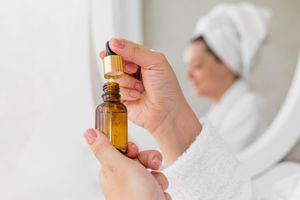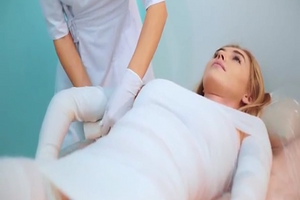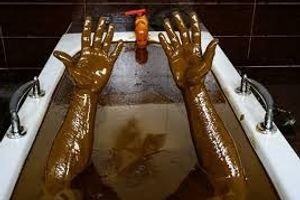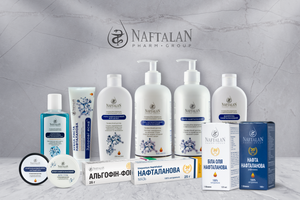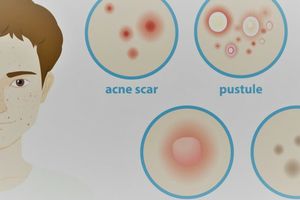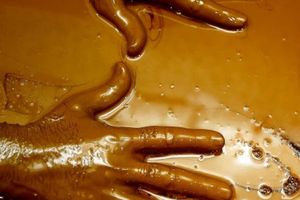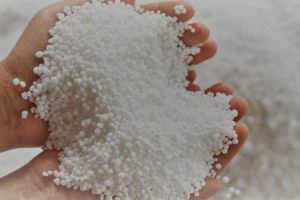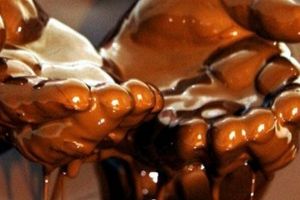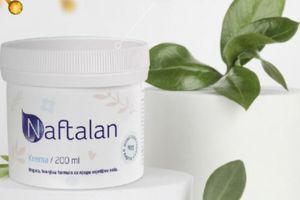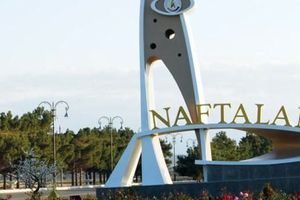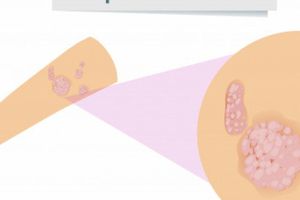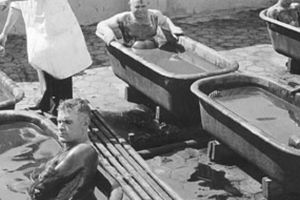This was in ancient times at the beginning of the 6th century AD. Once upon a time, a caravan of merchants passed by the town that is now called the city of Naftalan. There were many lakes with muddy water in these places. Doubts crept into the minds of merchants. In order not to harm the camels, the latter were driven away from reservoirs.
There was a camel in the caravan, which differs from other camels in its emaciation and diseases. He could not stand on his feet and moaned so loudly that he enraged his master. It got to the point that the hundred caravan-bashi gave an order to remove the sick animal from the caravan: "It is better for him to die by being poisoned by the poisonous water of the local lakes than to live with painful diseases." Leaving the sick camel to die, the caravan continued on its way. On the way back, passing through the same places where the sick animal was left, the owner of the caravan noticed a lonely camel, recognizing it as an alien. All the people of the caravan who knew this camel were very surprised by this fact. It was decided to follow the animal. To the surprise of people, the camel often entered the muddy water of the lakes, bathed in it and came out on dry land to rest under the sun. People discovered that there was a black oily liquid under the muddy water and assumed that the healing of the sick animal was related to this. So the population near the villages began to use the magical liquid as a medicine and due to its similarity with ordinary oil, later they gave it the name - "NAPHTALAN"
HISTORICAL FACTS
The first mentions of naphthalan are found in the works of the great Azerbaijani poet and thinker Nizami Ganjavi (1141-1201), where he writes about his observations of the removal of naphthalan oil by caravans from the village of Safi-Kurd, located near the present city of Naftalan. In the 13th century, the famous traveler Marco Polo, who was on his way from Venice to China, passing through Azerbaijan, mentions naphthalan in his treatise "On Great Tataria": "... there is a large well with an oily substance that can be used to train many camels. It is not used for food, but for lubrication for skin diseases in humans and livestock, as well as for other ailments."
Naftalan deposit is the city of Naftalan, located 320 km from the capital of Azerbaijan, Baku, and 50 km southeast of the city of Ganja. According to archival data, until 1873, naphthalene was extracted manually from shallow wells.
In 1890, the German engineer-concessionaire E.I. Yeger, having bought land in the naphthalene deposits, laid the first wells with a depth of 250 m for the extraction of industrial oil. However, when refining the oil, he was deeply disappointed: there were no gasoline fractions in the oil, and it did not burn. Being on the verge of bankruptcy, he noticed how on hot summer days hundreds of people from different places come here to dive into pits filled with this oil. Having seen the widespread use of naphthalene as a medicinal agent, and having borrowed from the local population the experience of treatment with this substance, he built a small factory for the production of naphthalene ointment, which soon gained great popularity. The products of this factory, as well as the raw materials from which they were made, began to be exported to Germany. Since 1986, two naphthalan joint-stock companies "Naphthalan in Magdeburg" and "Naphthalan in Dresden" have been operating there, producing naphthalan preparations. The methods of preparation of hunter's ointments were classified and monopolized.
Naphthalan ointment was used both as a medical agent, it was used in cosmetology as an emollient. In 1900-1902 in some cosmetic offices in Paris, various preparations were made from naphthalene ointment. Naphthalan was mainly used as a base for ointments. As early as 1899 in the magazine "Pharm. Zeitung" offered 65 prescription formulas with naphthalene ointment - ointments, pastes, plasters, powders. Within a short period, the demand for naphthalene and its various preparations increased in Europe. Since the end of the 19th century, ointments made on the basis of naphthalene began to be imported into Russia as a patented German remedy, without mentioning a word about their origin.
The first official report in Russia about the use of naphthalene for medical purposes was made in 1896, at a meeting of the Caucasian Medical Society in Tiflis by doctor F.G. Rosenbaum, who used it for burns, acute and chronic eczema, cathedral, psoriasis, wounds and sprains, rheumatic pains. According to him, naphthalan accelerated the scarring process, had an antiseptic, anti-inflammatory effect. In 1898, the Moscow Dermatology Society recognized the results of the works of the famous scientist A.I. Pospelov, published in the magazine "Doctor", who used naphthalene oil in dermatology and testified about its medicinal properties. Pospelov wrote: "In case of any superficial catarrh of the skin, where rapid epithelization, drying, revitalization of granulation, relief of pain and itching is required, naphthalan can and should be used."
Since 1920, the naphthalene deposit was transferred to the Soviet state and declared a protected zone. From the 1926, the specialized resort "Naftalan" began to function in the area of the deposit, where patients from all over the USSR with diseases of the musculoskeletal system, neurological, skin, gynecological, urological diseases were treated. Later (1938), an experimental laboratory for studying the biological effects of naphthalene was organized at the Baku Research Institute of Spa Treatment. This problem was also dealt with in Moscow, at the Central Institute of Spa Treatment of the USSR, the Institute of Experimental Medicine of the Academy of Sciences of the USSR. In 1941, the Pharmacopoeia Committee of the UMZ of the People's Commissariat of Health of the USSR approved the production of refined naphthalene — native naphthalene purified from extraneous impurities after its dehydration by heat treatment at a temperature of 125-135o. In addition to refined and native naphthalene, the pharmaceutical industry of the USSR in 1941 produced Naftalan ointment made from refined naphthalene. In the future, the chemical and pharmaceutical factory "Galen" in Moscow began to produce more than 30 names of drugs from naphthalene. In total, more than 200 preparations were obtained from it, such as refined naphthalene oil, detarsified naphthalene, yellow naphthalene ointment, bismuth-tannin-zinc-naphthalene ointment, salicyl-naphthalene ointment, sulfur ointment on naphthalene, ointment "thiolan"-naphthalene paste, zinc - naphthalene paste, sulfur-zinc-naphthalene paste, ichthyol-zinc-naphthalene paste, naphthalene-phytoncidal emulsion, naphthalene oil-pestilett, medical mastic, etc.
More than 100 years have passed since the beginning of studying the medicinal properties and use of naphthalene. Its effectiveness in various diseases is confirmed by the results of more than 1,600 scientific works and monographs, including 270 dissertations. In the city of Naftalan there is the only one in the world that impresses the imagination "Museum of crutches". Here you can see hundreds of crutches of various designs and sizes. They are left and signed by those who, after arriving at the resort, could not move without the help of crutches.
However, after the collapse of the USSR, Naftalan oil actually became unavailable to citizens of the Russian Federation, where Naftalan Farm Group is a pioneer among the official suppliers of Naftalan oil to Russia. In recent years, naphthalan began to be distributed in a number of European countries: it was officially registered in Ukraine, and is undergoing clinical trials in Germany, the Czech Republic, and Austria. The Naftalan hospital operates in Croatia, where patients from all over Europe, in particular from Russia, are successfully treated.
Naphthalan treatment.
(brief data from scientific literature)
The effect of tar-free naphthalene on the body is based on the interrelated effect of temperature and chemical factors. De-tarnished naphthalene, heated to body temperature, causes an increase in the temperature of the skin and subcutaneous tissue up to 1-1.5oC. Local hyperemia of the skin occurs as a result of exposure. An increase in blood flow, along with an increase in vascular permeability and pH shifts, contributes to the transport through the skin of the constituent elements of tar-free naphthalan, which contribute to the limitation of exudation and swelling of tissues, and induce proliferative processes in the focus of inflammation. In the exudative phase of inflammation, they limit the migration of leukocytes to the focus of inflammation and the growth of edema. In the proliferative phase of inflammation, the tar-free naphthalan increases the viscosity of the plasmolemma and reduces its permeability. Strengthens the resorption of the products of cell autolysis and the outflow of interstitial fluid. By increasing the activity of the antioxidant system, it helps inhibit the peroxidation of lipids in the focus of inflammation and restore the processes of glycolysis and lipolysis accelerated during inflammation. The components of detarsified naphthalan contribute to the destruction of proteoglycan complexes of sclerosed scars, cause the disaggregation of glycosaminoglycans and enhance the differentiation and maturation of fibroblasts, with further inhibition of the production of connective tissue fibers and the regression of sclerotic foci. The thermal effect of tar-free naphthalene in the affected area contributes to the accumulation of humoral low-molecular factors of local blood flow, which expand the vessels of the microcirculatory channel and increase local blood flow of the skin. Hyperemia of the skin increases the metabolism of the underlying tissues, accelerates the resorption of infiltrates and reparative regeneration in the lesion. In the area of application, muscle spasm and compression of nociceptive conductors decrease, which leads to a decrease in pain sensations, reconstruction and softening of connective tissue scars. At the same time, non-compliance with the temperature regime, long-term actions can cause a breakdown of the function of the adaptation systems and exacerbation of the pathological process.
Mechanisms of anti-inflammatory action of tar-free naphthalene are implemented in different ways. Naphthalan and most of its preparations inhibit the synthesis and inactivate the effect of inflammatory mediators. In experiments on rabbits with hyperergic inflammation, it was shown that already after the fourth lubrication with resin-free naphthalan, the serotonin content in the blood drops sharply, which remains at this level for a long period, and this effect is accompanied by a reduction in the level of acetylcholine due to its transition into active form Detarnished naphthalene has pronounced antihistamine activity, which is largely determined by the initial state of histaminergic structures. It has been proven that against the background of anaphylactic and allergic reactions, the antihistaminic activity of tar-free naphthalan is particularly evident and that the inhibition of the alteration of mast cells and the effect of tar-free naphthalan on enzymatic processes, primarily the stimulation of histaminase activity, are of direct importance in the mechanism of such action.
It was established that the administration of naphthenic hydrocarbons to experimental animals enhances the function of the adrenal cortex, promotes the progressive increase in the biosynthesis of corticosteroids, stimulates compensatory and adaptive functions, exhibits a pronounced desensitizing effect, and delays the development of many general and local symptoms. in case of development significantly weakens its symptoms.
Detarsified Naphthalan has an analgesic and local anesthetic effect. In experiments on rats to determine the threshold sensitivity to electric current, it was found that tarred naphthalene increases the threshold sensitivity of the skin by 5-6 times, reduces the tactile sensitivity of nerve endings while preserving the function of motor nerve fibers.
The effectiveness of tar-free naphthalene when applied topically is explained by the fact that it has an antimicrobial and bactericidal effect on the skin, and stimulates regenerative processes. The mechanism of bactericidal action is caused by the effect of naphthenic hydrocarbons on the bacterial membrane, the dissolution of its lipoid and resinous components, the increase of its permeability, the disruption of exchange processes in it and the loss of the viability of the microbe. Naphthalanotherapy increases the intensity of granulation of the affected skin surface, accelerates wound healing, and promotes the growth of epithelial elements. It has been established that in the formation of the therapeutic effect of tar-free naphthalene, its immunomodulating effect on the skin is of significant importance.
According to the results of clinical and experimental studies, it has been established that with adequate application of tar-free naphthalene, it helps to strengthen tissue microcirculation, the permeability of the blood-brain barrier, the activation of peripheral blood flow, the conduction of impulses along the motor fibers of peripheral nerves, and the excitability of spinal alpha-motones. The use of tar-free naphthalene for injuries of the peripheral nervous system enhances the regeneration and reinnervation processes, stimulates reparative processes, promotes the restoration of the functions of damaged nerves and muscles, the regression of existing motor and sensory defects, vegetative-vascular and trophic disorders.
NAPHTHALAN IN CLINICAL PRACTICE
There are numerous data on the therapeutic effectiveness of tar-free naphthalene oil and its preparations in the treatment of various diseases. Most of the studies are devoted to the study of the effect of tar-free naphthalene on patients with rheumatic joint diseases. It has been shown that common baths made of tar-free naphthalene oil contribute to the reduction of inflammatory phenomena in joints in patients with rheumatoid arthritis (RA) with minimal activity. The effectiveness of naphthalene lubrication in combination with UV irradiation in the restorative treatment of RA patients with minimal and moderate activity has been revealed.
As a result of a long-term controlled clinical study, it was established that a course of treatment with tar-free naphthalan in the form of local applications to the affected joints in patients with psoriatic arthritis with a minimal and moderate degree of inflammatory activity leads to a decrease in the activity of joint syndrome. At the same time, detarinated naphthalene is effective against skin psoriasis.
Applications of de-tarnished naphthalan have proven to be an effective means of preventing spinal deformity and correcting changes that have already developed in it in patients with ankylosing spondylitis (Bechterev's disease). After naphthalan therapy with tarred naphthalan, there was a decrease in the reflex tension of the involved muscles, as well as the intensity of inflammatory changes in the area of enthesopathies, which led to an increase in the amplitude of movements in the spine and peripheral joints.
Differentiated use with de-tarred naphthalan in the form of sitting, two- or four-chamber baths is recommended for diseases of peripheral vessels: obliterating atherosclerosis, endoarteritis, post-thrombo-phlebic syndrome and diabetic angiopathy of antivascular vessels of the lower extremities, which is due to its hypocorrosiveness of the vessels of the lower extremities, which is due to its hypomia. At the same time, treatment methods are selected taking into account the form of the disease, the stage of the pathological process, the degree of circulatory disorder in the limbs, and the individual characteristics of the patient's body. In addition, attention should be paid to the state of cardiac activity, the value of blood pressure and the state of cerebral blood circulation. Methods of treatment with detarsified naphthalan can be used in the initial stages of obliterating diseases, before and after surgery in combination with drug therapy, therapeutic gymnastics, dosed walking and massage.
Naphthalanotherapy with tar-free naphthalan is successfully used for inflammatory diseases of the female sphere, in chronic and subacute stages of diseases. The best results were achieved in the treatment of chronic non-specific salpingo-oophoritis, primary and secondary infertility. Naphthalan detarsified is used in the form of tampons, vaginal lubrication and naphthalan turunds. Detarnished naphthalene is used, which is sterilized in a water bath and cooled to 50-55oC. If necessary, tampons are combined with lubrication of the "panty" area
Local applications with de-tarnished naphthalene, as well as its preparations (naphthenic hydrocarbons) on the affected segments of the spine and areas of pain irradiation, both in the form of monotherapy and in combination with ultrasound therapy or infrared UV radiation, have shown high clinical effectiveness in patients with lumbar osteochondrosis spine with radicular manifestations (or without it), as well as with lumbosacral radiculitis (in the sub-acute stage, stage of incomplete remission and remission). The effect of tar-free naphthalan causes a significant reduction in the severity of pain syndrome, symptoms of tension, restoration of impaired functions in the reflex-motor sphere, improvement of indicators of peripheral blood supply of vessels and neuromuscular structures.
It should be noted that the first information about the effective use of naphthalan in the treatment of eczema, psoriasis, itching, burns and other skin lesions appeared in periodical medical literature more than a hundred years ago. According to many dermatologists, the feature of the action of tar-free naphthalene oil when applied to the skin should be considered a reduction of pain and tightness, softening of the skin, rapid elimination of the pathological process, absence of an irritating and less toxic effect. The most effective way to treat chronic dermatoses is to combine naphthalan treatment procedures (baths or lubrication) with UV radiation or heliotherapy. In the advanced stage of the above-mentioned diseases, you should refrain from naphthalan therapy.
Naphthalanotherapy showed high efficiency in patients with chronic non-specific prostatitis. Various complex treatment methods have been developed using mainly detarinated naphthalene, which include: naphthalene paraffin mastic applications on the panty area, rectal injections of sterilized detarinated naphthalene, general naphthalene white baths, ultraphonophoresis of detarinated naphthalene. Complex treatment has an anti-inflammatory effect on the tissues of the prostate gland, which regulates the effect on spermogram indicators, normalizes the secretory function.
The use of naphthenic hydrocarbons in the form of an application to the gums in combination with phonophorosem of the same drug shows analgesic, anti-inflammatory effects due to the improvement of microcirculation and immunocorrective effect in patients with chronic and acute inflammatory periodontal diseases. Restoration of the color and shape of the gums, cessation of bleeding was noted.
In case of chronic and acute inflammatory diseases of the sacral cavities (sinusitis, ethmoiditis, frontitis), the introduction of tar-free naphthalene or naphthenic hydrocarbons into the maxillary sinuses in combination with the placement of turunds with the above-mentioned naphthalene preparations in the area of the lattice labyrinth and ultra pain.








